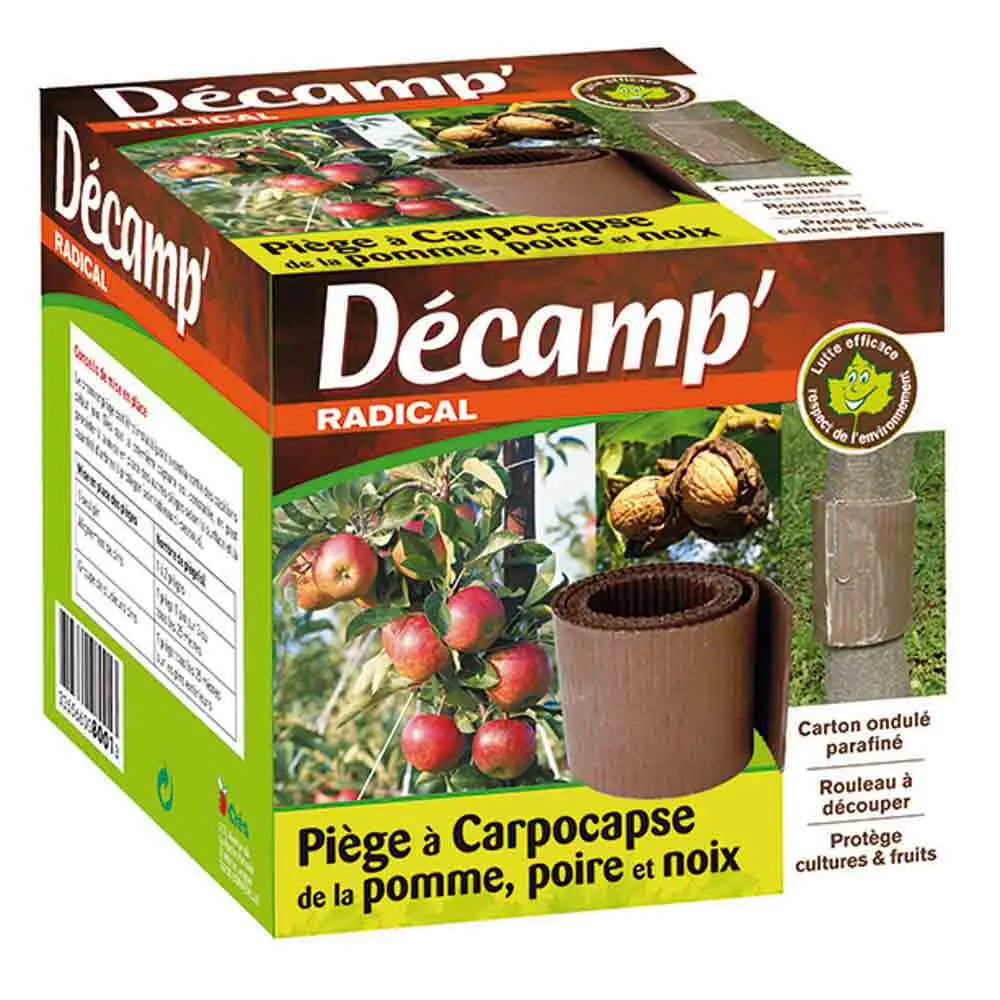CODDLING BEETLE TRAP
2 m strip of corrugated cardboard, waxed and combined with an attractant to combat the codling moth of apples, pears and walnuts. Roll to cut. Natural protection of fruits. What is the codling moth? The codling moth is a crepuscular butterfly (lepidoptera) measuring 16 to 18 mm. The adult appears in spring (late April/early May). After mating, the female lays her eggs (between 50 and 80) on the leaves or fruits. A few days later, the caterpillars are born and penetrate inside the fruit where they develop, causing damage. The development cycle lasts 3 to 4 weeks. There can be 2 or 3 generations per year depending on the region. At the end of summer, the caterpillar emerges from the fruit and takes refuge in the bark or in the ground to spend the winter in larval form after having spun a cocoon (hibernating stage). It will not turn into a butterfly until the following spring. How does the codling moth trap work? Strips of paraffin-coated corrugated cardboard are used to eliminate the larvae that are lodged in the trunk to prepare for pupation. The strips of corrugated cardboard are placed on the trunk of the trees. They will serve as a refuge for the larvae that can lodge there to pupate during the season or to weave their cocoon to spend the winter (end of the season). Simply remove the strips and burn them to eliminate future codling moths. It is possible to act in two stages: - a first installation can be carried out from June. In this case, it is necessary to check every 15 days whether the larvae have settled in the strip and remove it if necessary or put it back in place for another 15 days. This eliminates the first generation of larvae. - a second installation is carried out in mid-August and will not be removed until after the harvest (end of October). This is the best time to eliminate overwintering larvae. How to use codling moth trap strips? Wrap the corrugated cardboard strip around the tree to be protected about 20 cm from the ground. Cut it so that the two ends overlap by several centimetres. Secure the strip using the fasteners provided. Once the strip is in place, check every 15 days to see if the larvae have settled. If there are a lot of larvae, remove the corrugated cardboard and burn it. The paraffin it is coated with makes it highly flammable. You can even use it to light your barbecue or fireplace. If there are few larvae (beginning of the season), remove them manually and replace the strip. Be careful, the larvae very often lodge inside the grooves.







